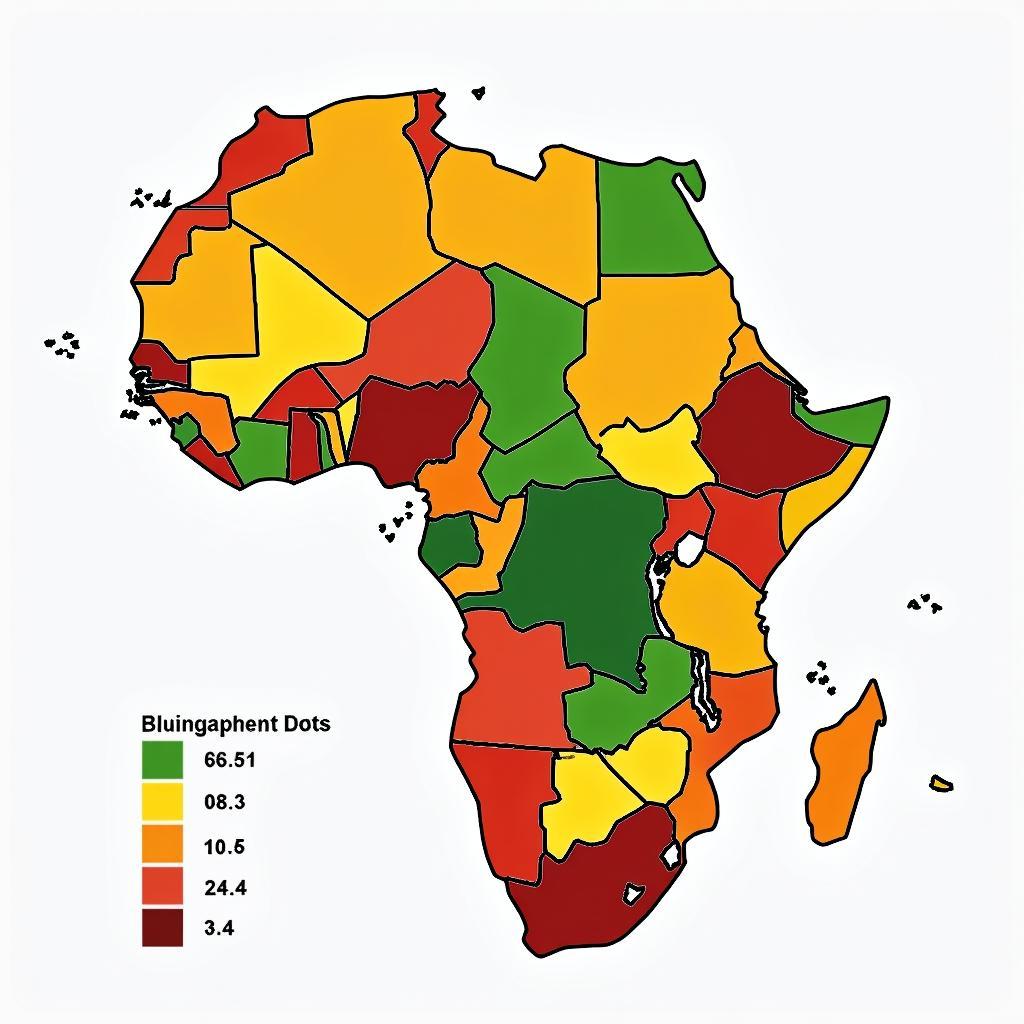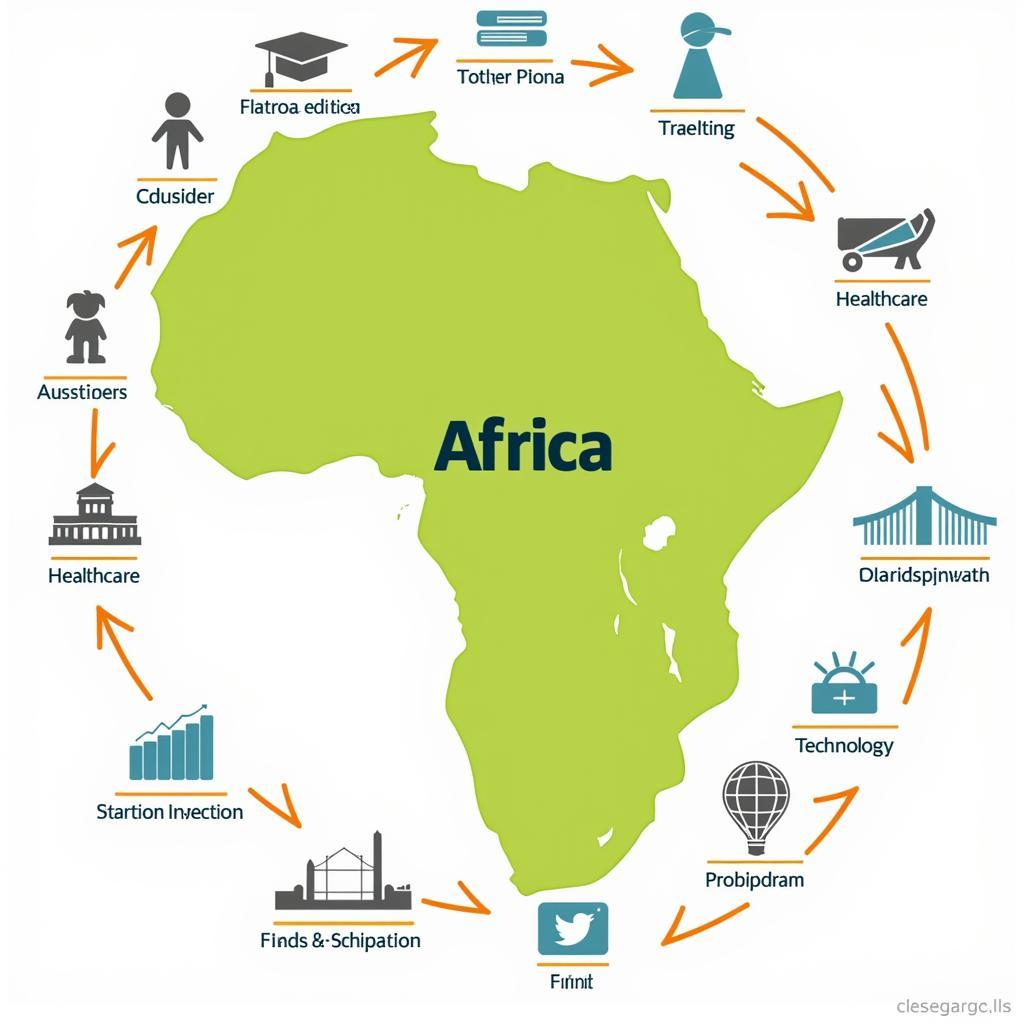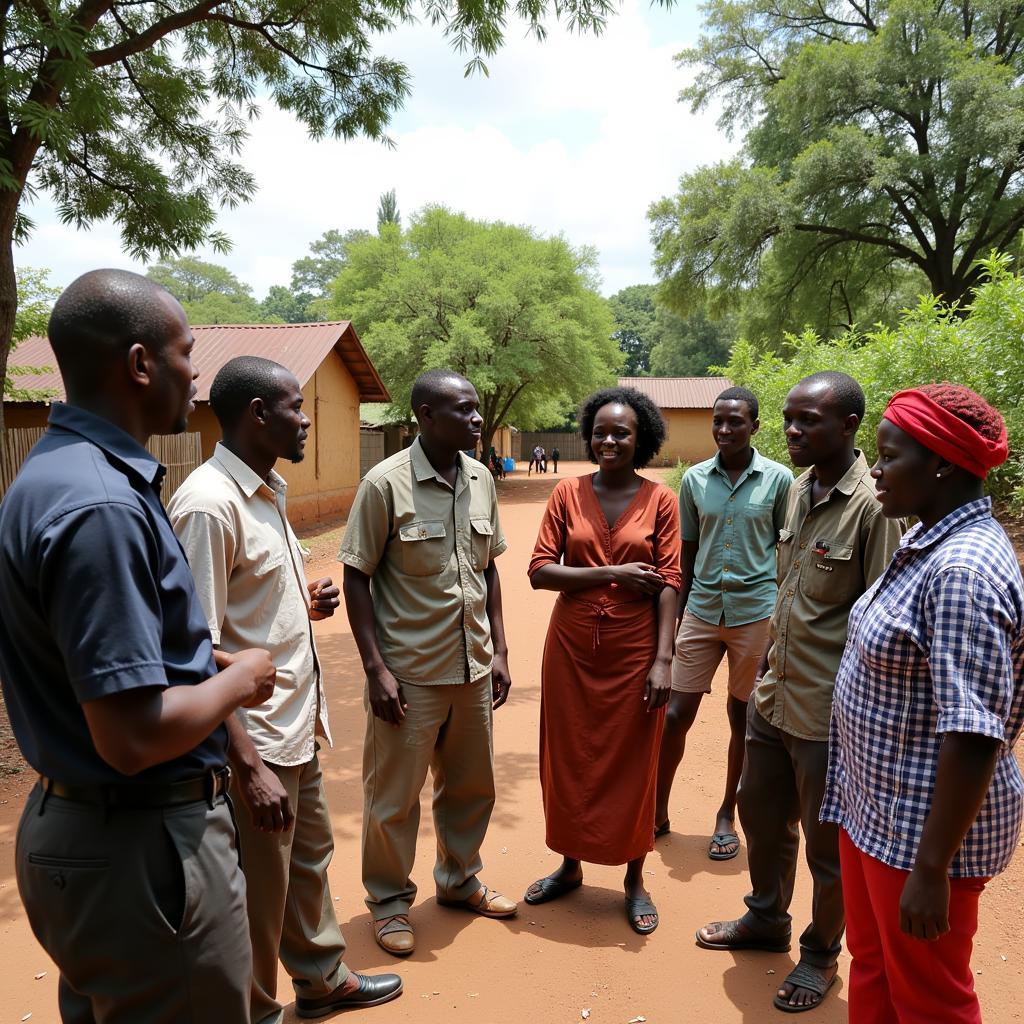African Countries and Their Development Index
The African continent is home to a diverse tapestry of 54 unique nations, each at a different stage of socioeconomic development. While often portrayed through a singular lens, understanding “African Countries And Their Development Index” requires looking beyond simplistic narratives. This article delves into the complexities of development across Africa, examining the factors influencing progress and highlighting the continent’s diverse socioeconomic landscape.
 African Countries by HDI
African Countries by HDI
Defining Development: Beyond Economic Growth
While economic indicators like GDP per capita provide a glimpse into a nation’s wealth, the concept of development encompasses a much broader spectrum. The Human Development Index (HDI), a metric used by the United Nations, offers a more holistic perspective, incorporating life expectancy, education levels, and standard of living alongside economic performance. This nuanced approach helps paint a more accurate picture of the well-being and opportunities available to individuals within a given society.
 Factors Impacting African Development
Factors Impacting African Development
Navigating Challenges, Embracing Opportunities
Numerous factors contribute to the diverse development trajectories observed across African countries. Historical legacies of colonialism, political instability, and conflict have left lasting impacts on social and economic progress. Additionally, challenges such as poverty, inequality, limited access to quality education and healthcare, and climate change continue to pose significant hurdles.
However, amidst these challenges lie immense opportunities. Africa boasts a youthful and growing population, abundant natural resources, and a burgeoning entrepreneurial spirit. Many nations are witnessing positive trends in areas such as technological innovation, infrastructure development, and regional integration.
Spotlight on Progress: Success Stories and Emerging Trends
Several African countries have made remarkable strides in human development, showcasing the continent’s potential for transformation. Mauritius, for instance, stands out with its high HDI ranking, driven by a strong education system, robust healthcare infrastructure, and a diversified economy. Similarly, Botswana’s impressive economic growth, fueled by its diamond industry, has translated into significant improvements in living standards and human development indicators.
african countries ranked by per capita
Beyond these success stories, emerging trends across the continent signal a positive trajectory. The rise of mobile technology and digital innovation is bridging the digital divide, empowering individuals, and fostering economic growth. Increased investment in renewable energy sources presents an opportunity to address energy poverty while promoting sustainable development. Moreover, the African Continental Free Trade Area (AfCFTA) holds immense potential to boost intra-African trade, stimulate economic diversification, and create new avenues for growth.
A Continent on the Move: Embracing a Future of Sustainable Development
While challenges undoubtedly remain, the narrative surrounding African development is evolving. A focus on good governance, transparency, and accountability is gaining traction, fostering an environment conducive to sustainable and inclusive growth. Investments in human capital, particularly in education and healthcare, are crucial for unlocking the continent’s vast human potential.
The journey towards achieving high levels of human development across all African countries is ongoing. However, by acknowledging the diversity of contexts, celebrating achievements, and addressing challenges head-on, Africa is poised to realize its full potential and forge a future where every individual has the opportunity to thrive.


